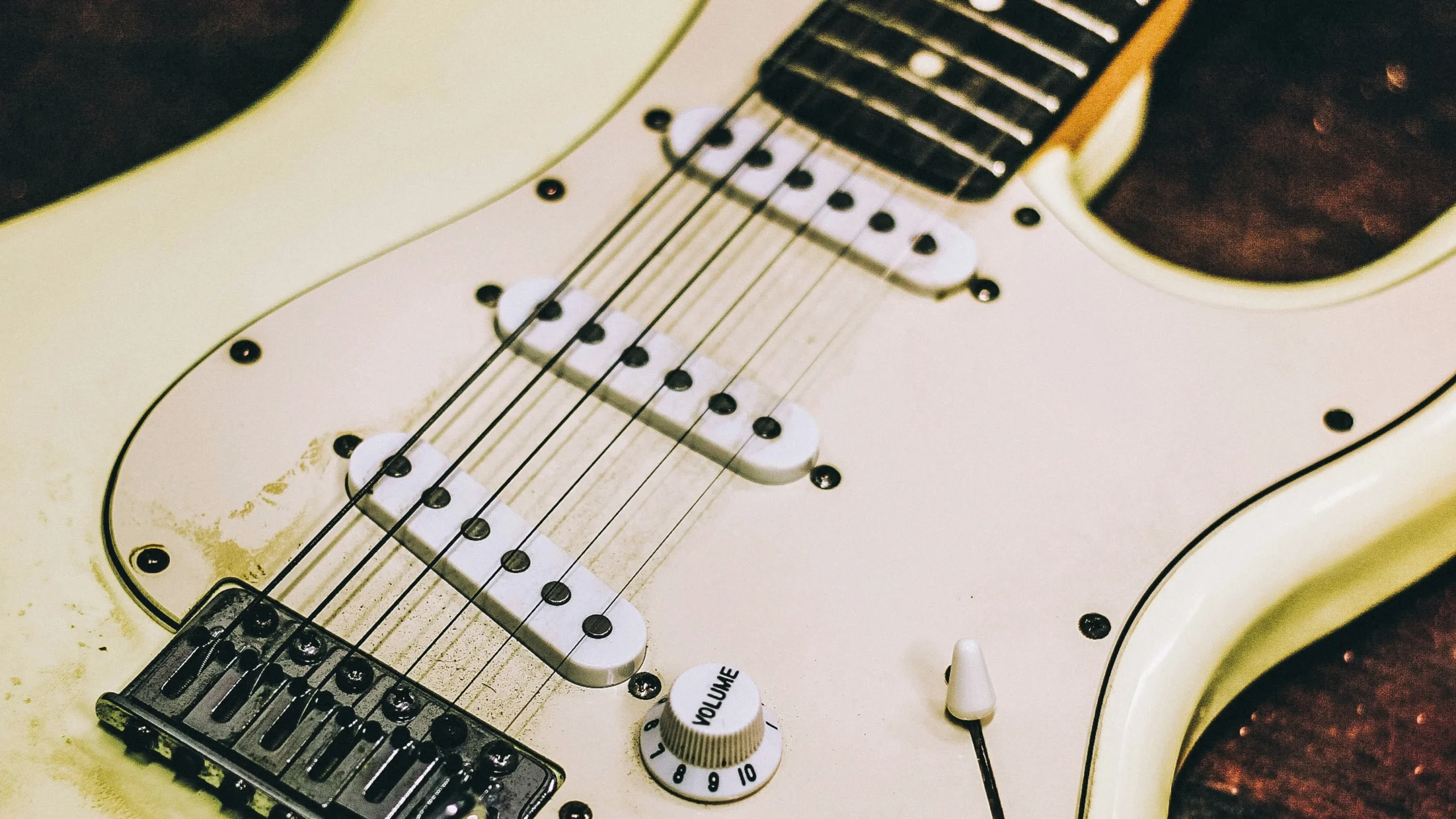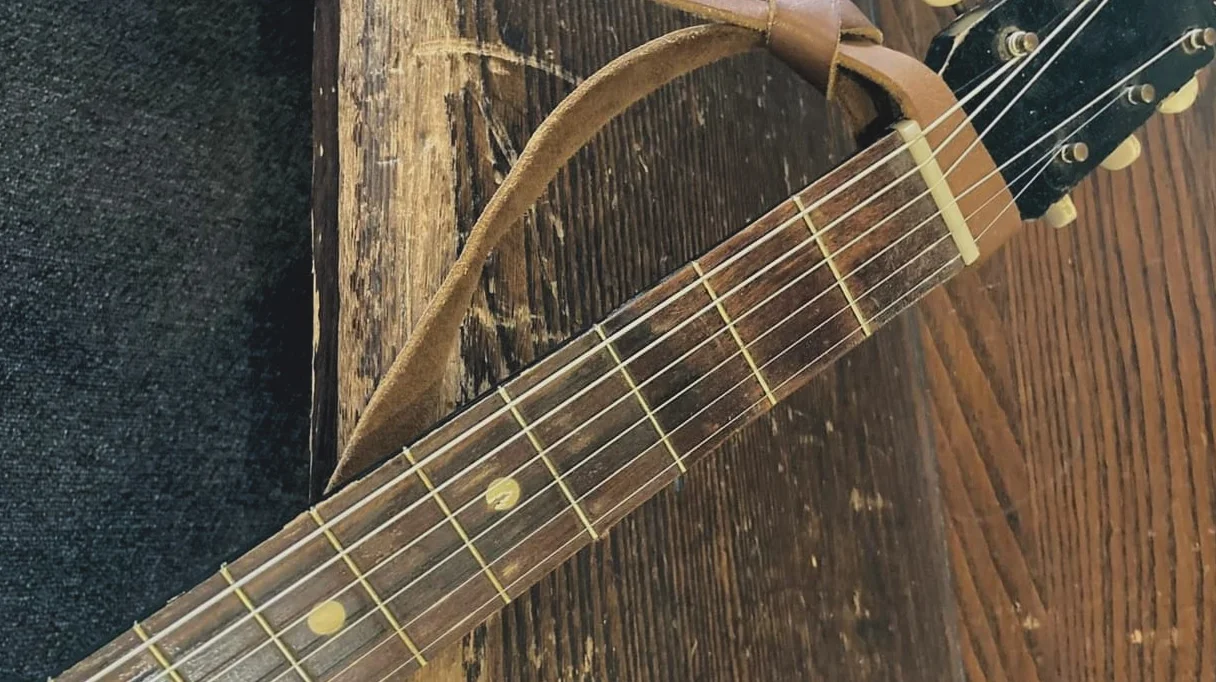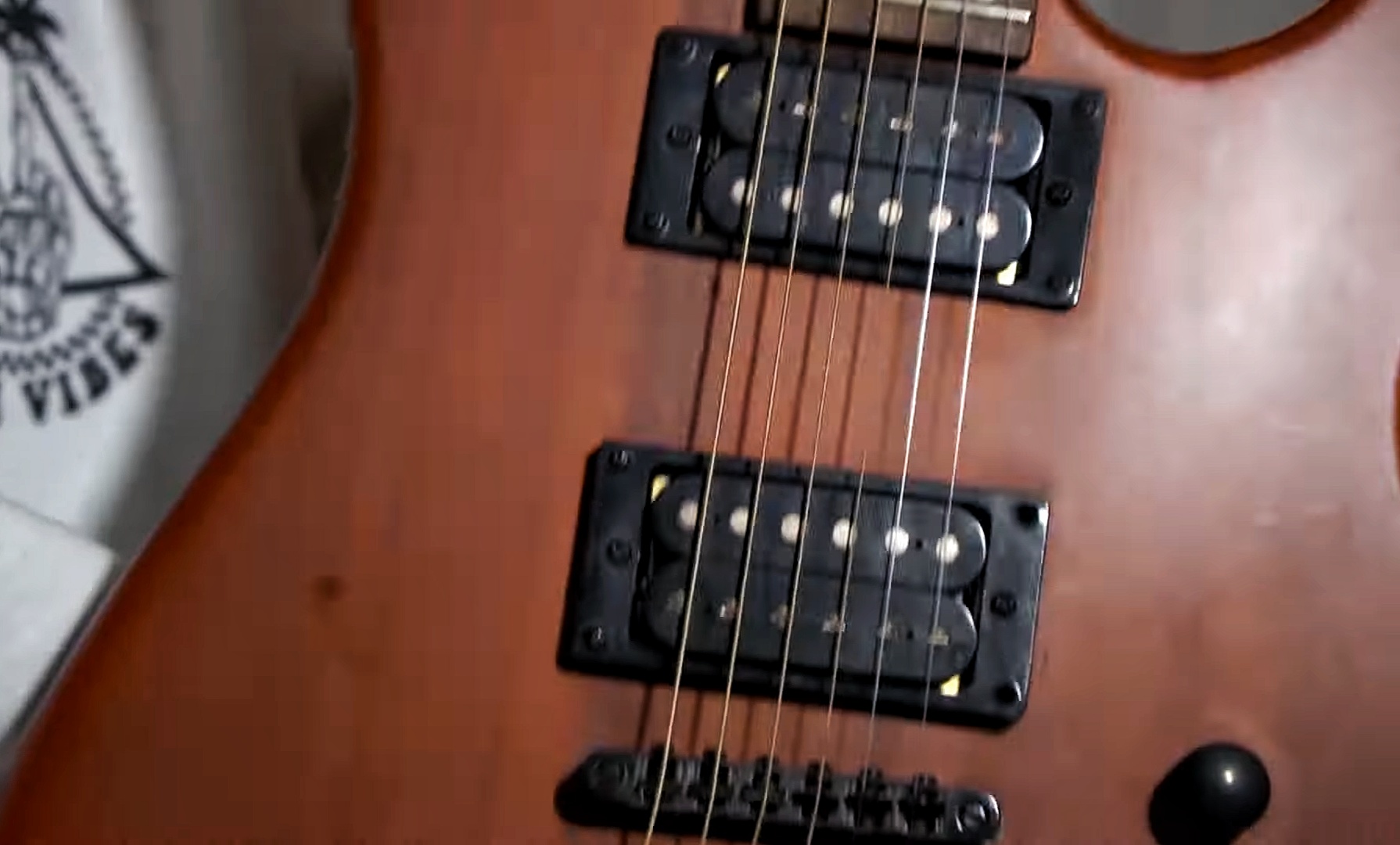
Can You Use Acoustic Guitar Strings On An Electric Guitar?
When it comes to guitars, the type of strings you use can have a significant impact on the sound and playability of your instrument.
What about mixing things up a bit? Can you use acoustic guitar strings on an electric guitar?
Here, I will delve into this common question among guitar enthusiasts.
I’ll discuss the differences between acoustic and electric guitar strings, the potential effects of using acoustic strings on an electric guitar, and whether it’s a good idea or not.
So, if you’re curious about experimenting with different string types on your electric guitar, keep reading to find out more.
Table of Contents
Do Acoustic And Electric Guitars Use The Same Strings?
Acoustic guitar strings differ from electric guitar strings.
They differ in the number of string windings, string gauge size, and materials used.
Both electric and acoustic guitar strings have a steel core. A string can make a different sound depending on the type of string.
An electric guitar produces sound by using electricity, while an acoustic guitar produces sound by playing strings.

What Is The Difference Between Acoustic Guitar Strings And Electric Guitar Strings?
It is important to have a basic understanding of acoustic and electric guitar strings before you can understand their differences.
Strings make a sound when a guitar is played. Music is created when the strings move and make sounds that travel through the guitar’s body.
There are many types and mixes of guitar strings, most of which are made of steel or nylon.
A guitar’s tone, ease of play, and overall sound are heavily influenced by its material. Acoustic and electric guitar strings differ here.
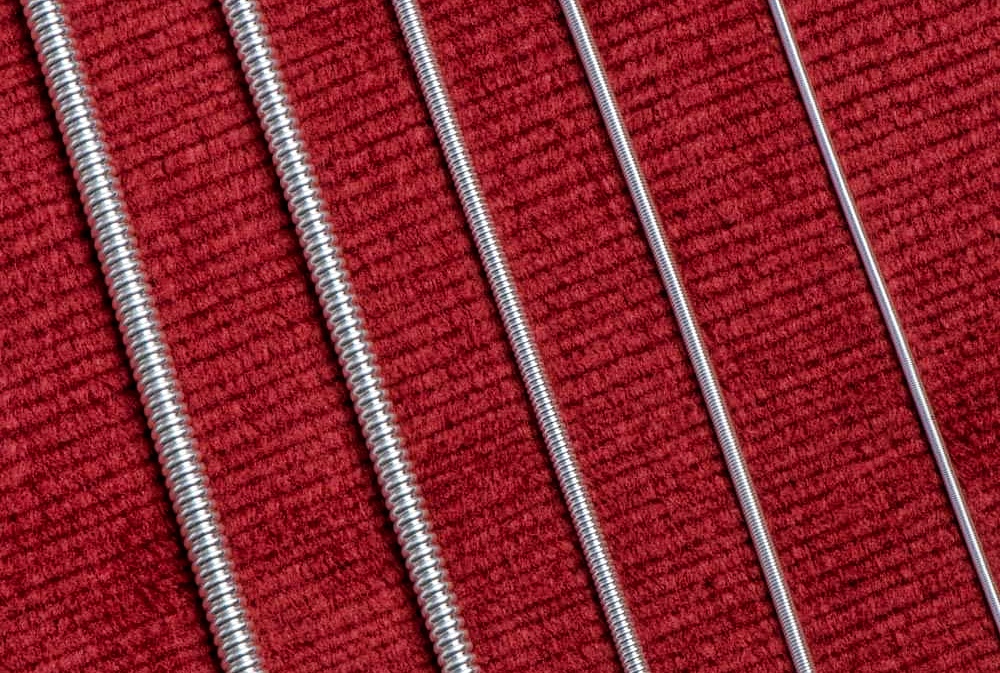
Number Of Wound Strings
Acoustic and electric guitar strings differ primarily in the number of coiled strings.
Acoustic guitar strings typically consist of two unwound strings and four wrapped strings.
It is common for electric guitar strings to contain three-wound strings, but some manufacturers may include four-wound strings.
The last set is for those who want to imagine themselves playing jazz music on stage with Louis Armstrong.
Winding Material
Electric guitar strings are distinguished from acoustic guitar strings by the material used to wind around their cores.
Winding is done with steel. Metal is the main component of spinning materials.
Acoustic guitar strings are wound (plated) with brass or bronze, which are not magnetic metals.
Guitar strings like these have a darker color, similar to copper or gold.
Steel or nickel is commonly used in electric guitar strings. Electric guitars use magnetic metals to work because of their magnetic properties.
The strings are brighter and lighter than those on electric guitars.
Gauge Size
Gauge size indicates how thick a string is. In general, thicker strings react warmer and have more volume.
Additionally, they are stronger. Less-thick strings are easier to play and sound better. There are different string lengths for various types of guitars.
Acoustic guitars prefer string gauge sizes that are heavier, while electric guitars prefer lighter gauge sizes.
You can determine the gauge size of guitar strings by reading the numbers on the box.
The strings on most electric guitars are 9-gauge, while the strings on most acoustic guitars are 12-gauge.
Acoustic guitar strings are usually 21.2% heavier than electric guitar strings. Acoustic guitar strings generate 54.8% more pressure than electric guitar strings.
You’ll often hear terms like “extra light,” “light,” and “medium” when comparing string lengths.
Electric guitar strings will have smaller gauges than acoustic guitar strings.
There is also a wide range of differences between guitar companies when it comes to light strings.
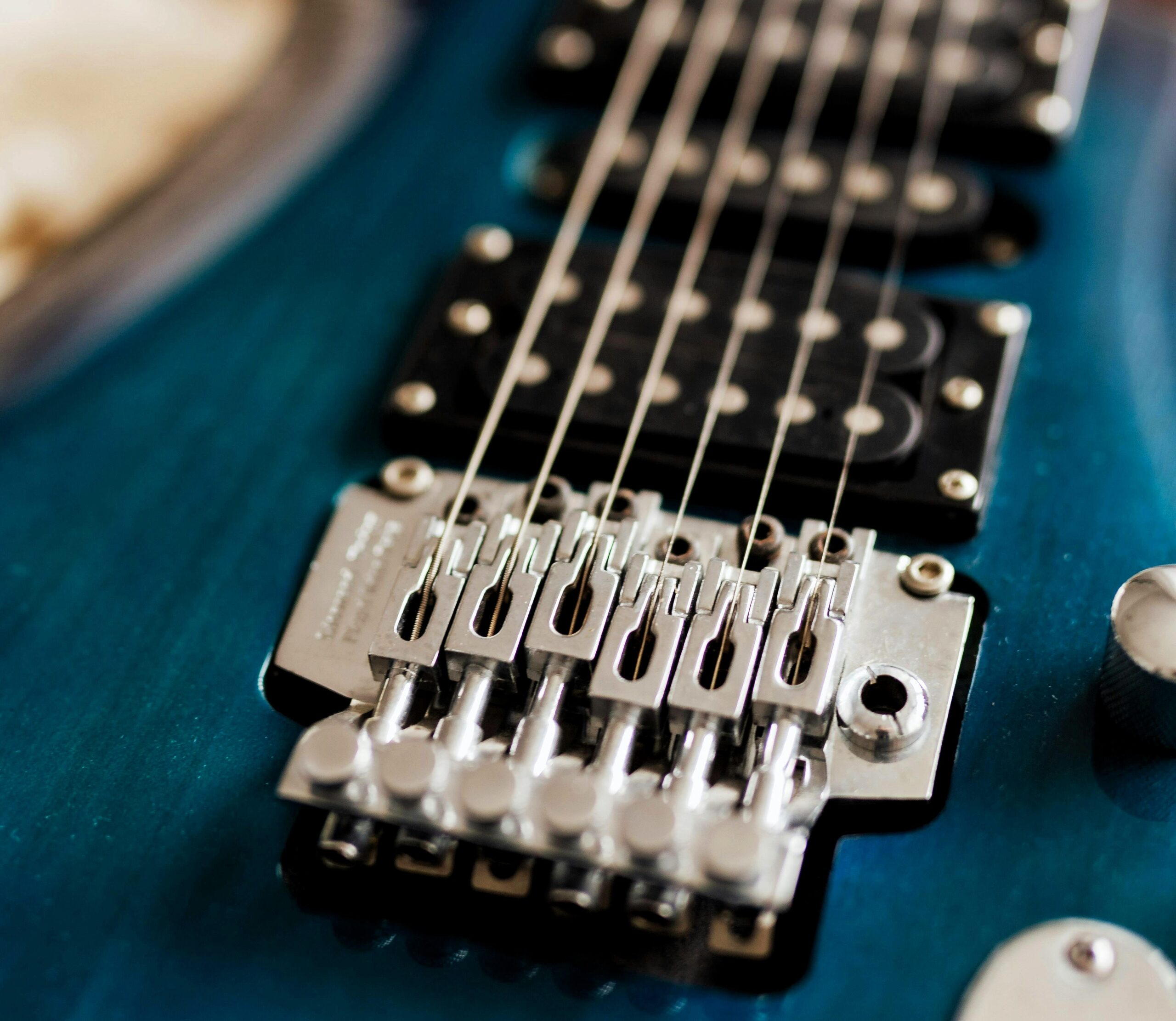
Guitar String Thickness
Gauge refers to the thickness of the material used to make guitar strings. The thickness of guitar strings is usually measured in thousandths of an inch.
A standard low E string is 0.052″ thick, whereas a high E string on an electric guitar is often 0.009″ thick, which means “nine thousandths.” The strings get thicker as you go up.
Is there a reason why you would choose a thinner gauge over a bigger one?
All that matters is how you play and the tone you want to set. Thinner strings sound better on an electric guitar but are also easier to bend.
They are also more likely to break when you play or tune them.
Thick strings require more force to bring up to pitch, so they will put more strain on your guitar’s neck.
However, they often sound better than thinner strings since they have a richer, fuller sound and are harder to bend.
Acoustic guitar strings tend to be stronger than electric guitar strings because you do not bend your fingers as much. Bulk can also be added by adding more thickness.
Strings for bass guitars are also true, but they are larger than strings for electric or acoustic guitars. Bass strings usually have a gauge range of 0.045″ to 0.105″.
There are a variety of guitar string gauges, from the thinnest to the thickness:
- Extra-light: .008” – .042”
- Light: .010” – .046”
- Medium: .011” – .050”
- Heavy: .012” – .054”
Can You Use Acoustic Guitar Strings On An Electric Guitar?
Acoustic guitars are usually larger than electric guitars. Their big hollow bodies allow them to produce soundwaves that resonate and spread.
In real-life scenarios, the right arm must reach a little higher than it would with an electric.
Electric guitar strings are typically much looser than those on an acoustic guitar.
Therefore, you may find it harder to play the strings with your fingers because they are less flexible and stronger.
It is especially important to remember this for newbies whose fingertips still need calluses. At some point, it had to happen!
You can find out whether steel or nylon strings are best in our other blog post!
It is assumed that the strings in this piece are steel. Generally speaking, nylon strings are easier on the fingers, but they have larger necks and a sound that might or might not suit you.
Therefore, acoustic guitars are easier to play, though they can be a little harder to play. You can go right with this if you prefer mostly acoustic music!
With an acoustic guitar, you can play a lot of songs well, and if you want to sing songs and write your own, that works well as well.
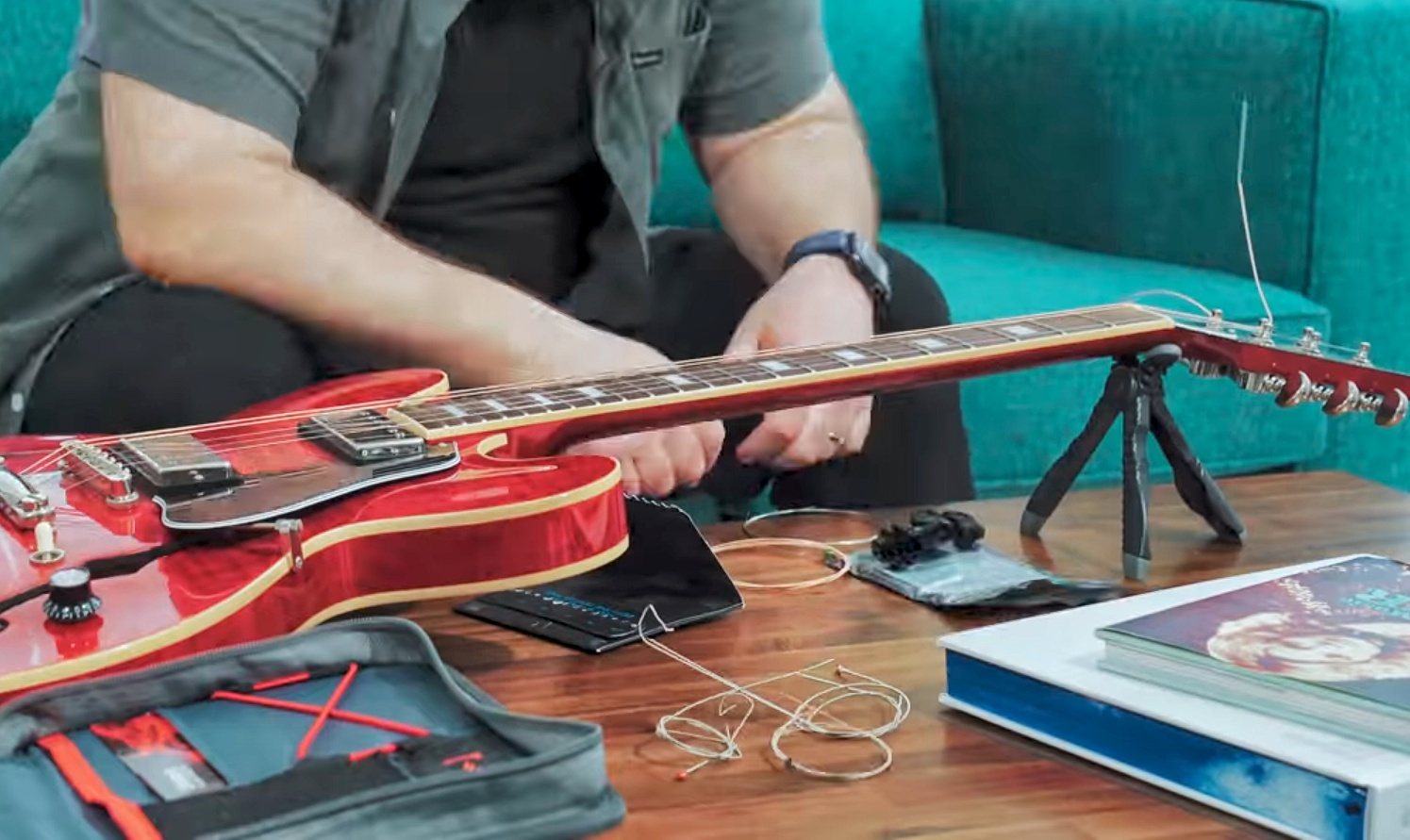
What Happens When You Put Acoustic Strings On An Electric Guitar?
Electric guitars sound different when they are strung with acoustic strings. First, you’ll hear a low, mid-range tone.
Your guitar’s neck will be stressed more, so the truss rod may need to be adjusted.
Acoustic strings are also thicker than electric strings. Your strings will be harder to bend after that.
Acoustic and electric guitar strings are made of different materials, resulting in various sounds.
Some players said it was harder to play, the sound was fuzzy, and the strings didn’t stay in tune for long periods.
The Effects of Interchanging Acoustic Guitar and Electric Guitar Strings
Switching strings on an electric or acoustic guitar has noticeable effects. Here’s what happens when you use the wrong strings on each type of guitar:
Several considerations should be made if you plan to mix electric guitar strings with acoustic guitar strings. Here are the specifics:
Harmonious Hush
Electric strings do not have as much tension as acoustic strings, so they may not have the force needed to resound through the soundboard.
Therefore, the sound experience is unbalanced and calm due to a decreased volume.
The Lost Luster
A magnetic tuner on an electric guitar is carefully designed to work with it.
Acoustic guitars create a rich tapestry of sound that is impossible to duplicate with electric strings.
The sound output lacks clarity and brightness, and the natural resonance that fans think makes acoustic tunes so appealing.
Risk of Discord
An acoustic guitar designed to work with acoustic strings may have problems when electric strings are put on.
In comparison with acoustic strings, electric strings are less tensioned.
A dangerous difference in tension can cause unwanted noises that can damage the instrument’s bridge, neck, or soundboard.
Weaker Output
Acoustic strings are built and wound differently than electric strings.
The magnetic tuners on electric guitars are designed to work with electric strings for a reason.
With acoustic strings, magnetic pickups might not work as well, resulting in a lower output signal.
Strings that Shift Sound
There is a difference in tone between acoustic and electric strings.
An electric guitar’s tone, reaction, and balance are all affected by its string thickness and type.
An electric guitar’s sound should be bright, clear, and articulate.
Intonation Challenges
Acoustic guitar strings differ in tightness and gauge from electric guitar strings.
Tuning problems occur when this happens, resulting in out-of-tune notes and chords higher up the neck.

What Adjustments Do You Need To Make On Your Electric Guitar After Putting Acoustic Guitar Strings?
There are several reasons why people might want to use acoustic guitar strings on an electric guitar.
The electric guitar is either intended to sound like an acoustic guitar, or the player likes to experiment.
Setting up the guitar properly, which includes adjusting the neck and raising or lowering the string height, is crucial.
I want to start by talking about the string gauge. Electric strings should be close to this tension, so you won’t have to make as many adjustments.
When the gauge of the string is larger, there is more strain.
Electric guitar strings are about 36% less tight than acoustic guitar strings.
You should choose a smaller string gauge size to achieve the same sound.
The 11s will feel heavier or stiffer in this case. It will feel very light and easy to bend compared to standard 10s.
Make sure your guitar strings have the same pitch. Ensure that the bridge’s nut and saddle are in good condition.
Also, ensure that there are no ties that could harm the project.
Then, try to feel how your neck feels. It may be necessary to change the truss rod to fix the tension problem.
You can make it easier by using lighter-pitched acoustic guitar strings.
You should play every note on the guitar. Also, make sure that the fret buzz on the notes is quiet enough.
Is It Okay To Put Electric Guitar Strings On An Acoustic Guitar?
Some people compare acoustic guitars to electric guitars. Others say electric guitar strings make playing the guitar easier and less painful. Then, some like to experiment.
An acoustic guitar should not be strung with electric guitar strings, which are about 36% less tight than acoustic guitar strings.
The string gauge size with a thicker gauge will produce the same sound.
Make sure your guitar is set up correctly. Electric guitar strings should match those on acoustic guitars.
Try it out and see how it feels. It is important to play each note.
Strings that are too long will break nut slots that are too small.
Is it possible to have strings that are too small? Could that harm the guitar?
No, not right away. The nut slots and the saddle of the bridge will become ruined if you use strings that are too small for a long time.
The new grooves aren’t dangerous in their own right, but they may cause problems with articulation and buzzing.
However, if you go back to the right gauge, you may damage the saddle or nut if you put the wrong string in.
Acoustic guitars can be strung with electric guitar strings temporarily, but only temporarily.
You can put electric strings on an acoustic guitar if you need to fix something quickly.
Final Words
When it comes to using acoustic guitar strings on an electric guitar, it ultimately boils down to personal preference and the sound you’re aiming for.
While acoustic strings can be used on an electric guitar, they may offer different tonal qualities than electric guitar strings.
The choice between the two types of strings can significantly impact your playing experience and the overall sound produced by your instrument.
Experimenting with different string types can help you find the perfect match for your playing style and musical preferences.
So go ahead, try out both options, and see which one resonates best with you and your music!

